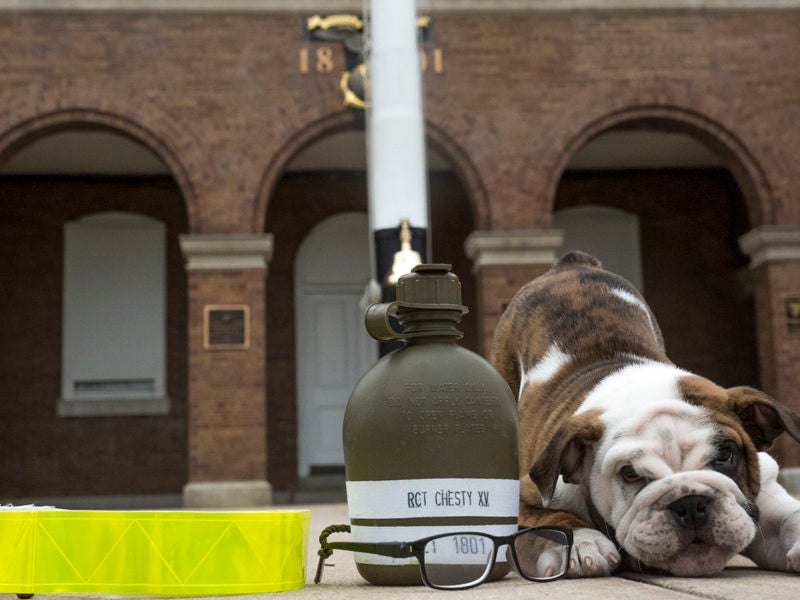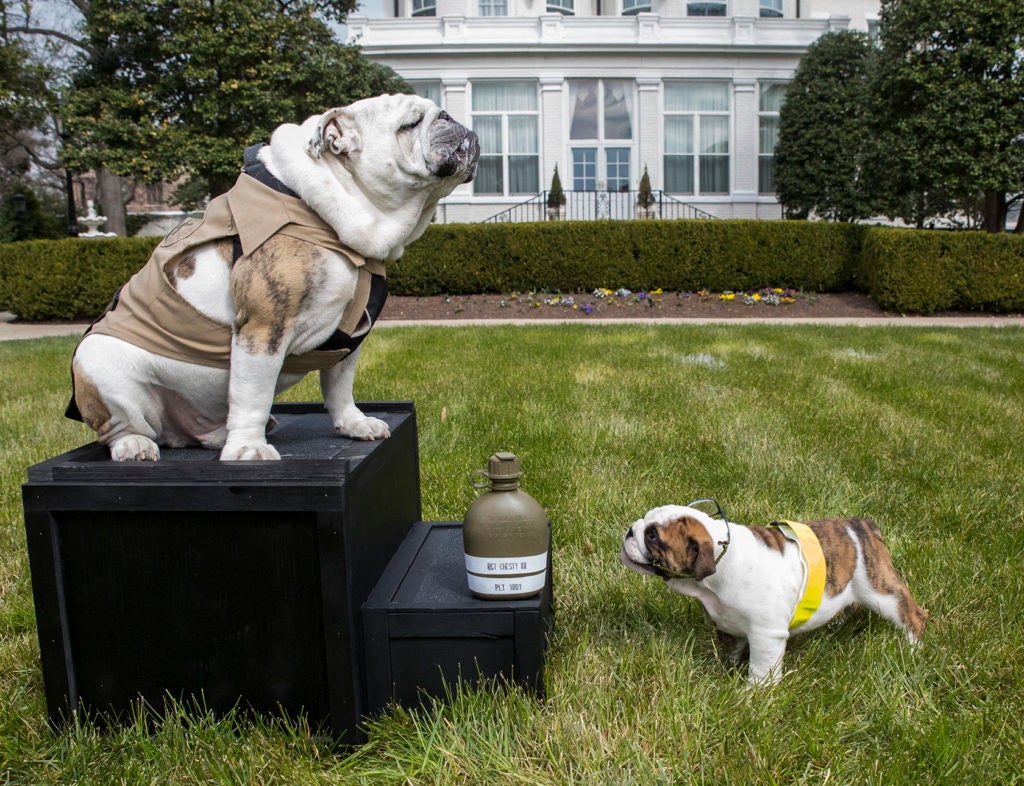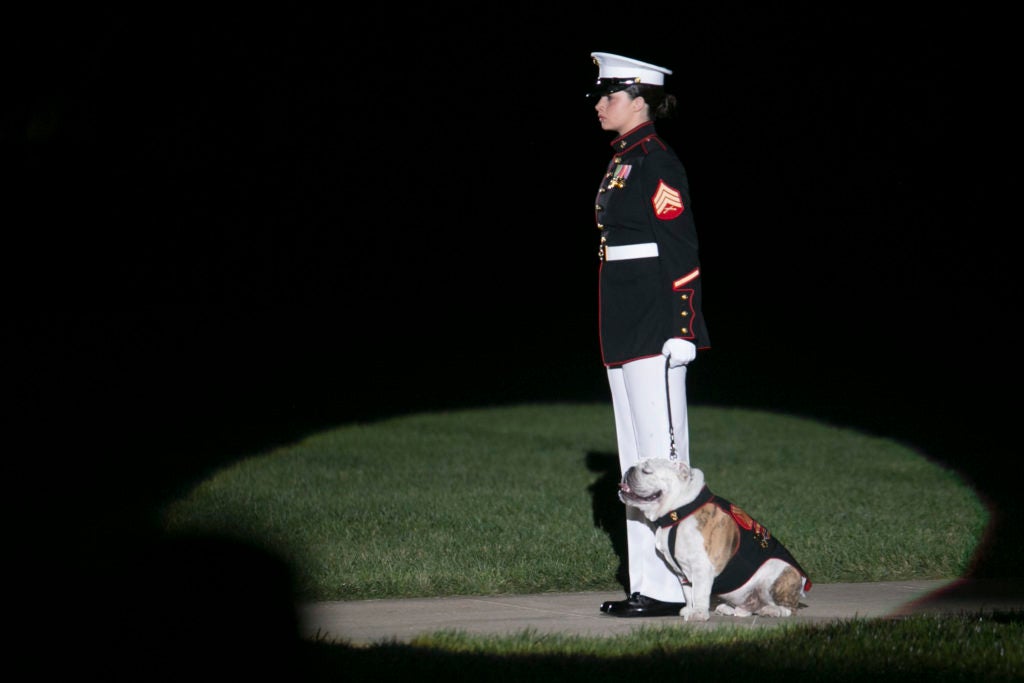
Meet Chesty XV. He is the newest Bulldog recruit to join the United States Marine Corps, and he has big paw prints to fill. As the 15th Chesty to serve as the Marine Corps’ unofficial mascot, he already has the first of his many duties figured out: boosting morale. Chesty has plenty of Bulldog charm, a breed known for its loyalty and friendliness — as well as its tenacity. But does he have what it takes to uphold 61 years of tradition?
Unofficial Mascot, Official Duties
The Corps adopted the Bulldog as its mascot after World War I. According to tradition, the Marines fought so fiercely in the battle of Belleau Wood in France that the Germans called them “teufel hunden” after the devil dogs from Bavarian folklore. The nickname “devil dogs” stuck.
Bulldogs are internationally recognized as symbols of courage. Sports teams and universities around the country employ the thickset bruisers as their mascots, and the Bulldog was famously associated with Winston Churchill’s defiance of Nazi Germany. In fact, Bulldogs became the unofficial mascot of the United States Marine Corps after a recruitment poster featured a Bulldog wearing a U.S. helmet chasing a fleeing Dachshund in a German helmet. For the Marines, there’s no better breed to stand in as their “teufel hunden.”

It didn’t take long for real Bulldogs to enlist. Jiggs, the first Marine Corps Bulldog, joined the ranks in 1922. He was buried with military honors after his death four years later. In 1957, Chesty I, named for Lt. Gen. Lewis B. “Chesty” Puller, Jr., became the first in a long line of Chestys to represent the Marines.
For breed enthusiasts, it is easy to see why Bulldogs embody the Marine Corps motto, “Semper Fidelis” (always faithful). Tough, fearless, tenacious, and muscular, Bulldogs exemplify the fighting spirit of the Marine Corps.
A Soft Spot for Tough Dogs
Though Chesty may be the most famous Bulldog in the Marine Corps, he is not the only one. Bulldogs often serve at boot camp training installations, where they participate in parades, ceremonies, and morale-boosting activities.
In August 2017, Opha May became the first female Bulldog mascot in the Marine Corps. Named after the first female marine, Opha Mae Johnson, the pup graduated training in November, and is now Parris Island‘s 21st mascot.
The Marine Corps honorably discharges its mascots after a few years, giving the dogs plenty of time to enjoy retirement with their adoptive families. As you can probably imagine, the application process to adopt one of the Corps’ retired canine companions is very competitive.

Reporting for Duty
Chesty XV will one day replace Chesty XIV as the mascot for the Marine Corps, but first he has to go through training. Unlike his fellow Marines, however, Chesty doesn’t have to worry about drill sergeants. Training up the new recruit falls on his predecessor.
Meet @USMC Barracks Washington mascot Chesty XV and watch him squirm in the arms of Gunnery Sgt. Aaron Calderon. Chesty XV was introduced Monday in a ceremony on the barracks parade ground. More: https://t.co/BcpYRf5duv pic.twitter.com/N8FzvDHWI9
— Stars and Stripes (@starsandstripes) March 21, 2018
Chesty XIV joined the Marines as a mascot in April of 2013. If anyone can show puppy Chesty the ropes, it’s Corporal Chesty XIV. The pup will shadow his older peer this year until Chesty XIV’s official retirement — participating in drill ceremonies, parades, and the Marines’ community relations programs. It’s a lot for a young Bulldog, but he has handlers standing by to help him learn the finer points of military protocol.
If all goes well, Chesty XV will take part in his first parade in early July, where he is sure to capture the hearts of everyone he meets.

